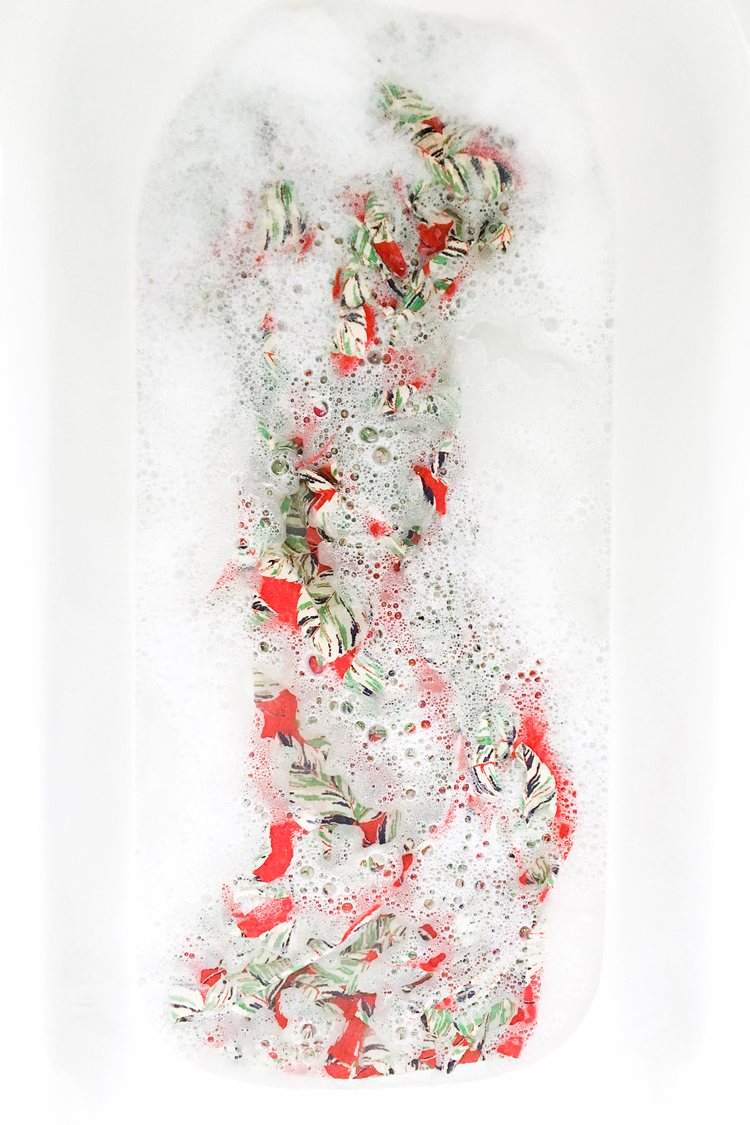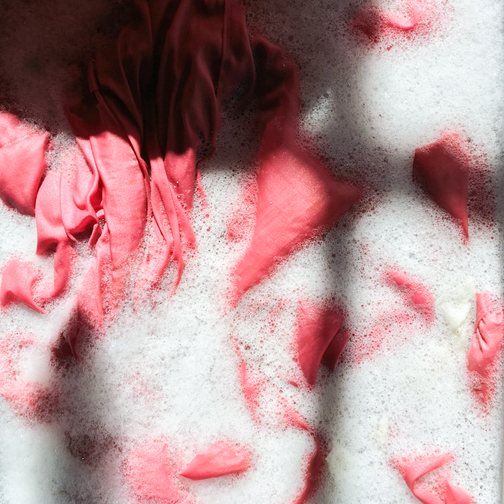
How to Remove Stains from Vintage Clothes
Do yourself a favor, and treat that spot the next minute you notice it on your garment. Here are selected vintage vendors' tips on how to do it professionally.
“Whether you’re sipping on cocktails or chowing down on a burger, make sure to treat the stain ASAP. Letting the stain soak into the fabric and dry will just make it more difficult to get out later”, knows Allyson Hillerby of Birthday Life Vintage.
Seasoned vintage vendors shared their best tips. Read and learn!
Any stains
“Grandma's Secret Spot Remover is great for removing stains from cotton and synthetic fabrics. I have seen it work on lighter-colored silk but you have to be careful with darker colors. It has a bit of peroxide in it so it can bleach darker fabrics if you leave it on for too long. I put a bit on the stain, rub it in with the tip of the bottle, let it sit for about 20 minutes, and then soak the garment. I've found it to be best for food and grease stains and also those random brown spots that seem to be on almost every vintage garment!” – Laura Lanz-Frolio, La Poubelle Vintage
Grease and oil
“I’ve had some luck with Dawn dish soap to remove grease stains. I mean, if Dawn is safe enough for birds caught in oil spills, it’s okay for your vintage clothing! The fresher the stain, the better. Rub it into the fabric so it soaks into the fibers, wait about 15 minutes, and handwash. Repeat as needed”. – Allyson Hillerby, Birthday Life Vintage
“A paste of baking soda and Dawn dish soap. Let the paste sit, and repeat if the grease doesn’t come out after washing”. – Lily Greig, Love Charles Vintage
“Dry clean process is made to remove oil. You can choose an eco-friendly dry cleaner, but there’s no home cleaning that will be more effective.” – Julie Bergmans, Fabgabs Vintage
Armpits and neck
“The best way to remove yellowing in armpits is to make a paste of dish soap, baking soda, and hydrogen peroxide and apply to the yellowing. Let the paste sit for a bit, rinse it out, and then let the garment sit out in the sun. This can cause fading to some fabrics, however, so if you are afraid of color fade/bleed, be cautious about using this technique.” – Stephanie Snyder, Blue Fennel Vintage
“I am a fan of using a paste made of crushed aspirin. This is a mild acid, so be aware it could mildly fade colored fabrics or cause prints to bleed.” – Julie Bergmans, Fabgabs Vintage
“My go-to for cottons is a paste of baking soda, Dawn dish soap, and a bit of hydrogen peroxide (just enough of it to make the mixture spreadable). If you’re able to let it sit in the sun while the mixture does its magic, even better! Keep an eye on it to make sure the fabric is not fading/lightening (hydrogen peroxide is the bleaching culprit here), and if it’s looking ok, let it sit for several hours (or even a full day), then hand wash.” – Allyson Hillerby, Birthday Life Vintage
“I love lemon juice for white garments, especially cottons. I use it on most of my Edwardian cotton pieces.” – Julie Bergmans, Fabgabs Vintage
Rust
“Lemon juice, salt, and sun. The lemon and salt (or cream of tartar) are equal parts. If for colors, use without sun at first as it can lighten fabrics. Leave for 30 minutes then rinse thoroughly or wash. Apply enough to cover the stain.” – Susana Ash, Selvedge Fine Vintage
Blood
“On a fresh bloodstain, just wet it, then pour hydrogen peroxide on it. It is always best to test for colorfastness when using hydrogen peroxide though. Here is how it works: Hydrogen peroxide is an oxidizer. It reacts with the enzyme catalase present in blood which catalyzes its breakdown and we end up with water, oxygen, and heat.” – House of Edgertor
Suede
“Suede is tricky to clean but I've had the best luck with suede eraser-brush kits. The eraser can help scrub off any surface marks or crud that is stuck on, and then the bristles of the brush help smooth out the nap of the suede and disguise the stain. You're literally removing a little layer of the suede so be careful but I have cleaned or at least lightened many suede stains this way.” – Laura Lanz-Frolio, La Poubelle Vintage
Delicate fabrics
“For silks, crepes, organza, and more delicate items, I start with Woolite for soaking. That usually works great and I repeat the soak until the water is clear.” – Tracy Gosner, Moving Mamas Vintage
More links
• Vintage Clothing Stain Guide by Vintage Vixen
• Care of Vintage – Stain Removal Tips by Denis Brain


